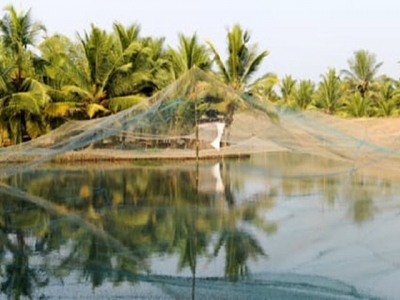Transferring salmon sector know-how to the tropics

A new project is looking for partners to apply some of the salmon sector’s successful disease management methodologies to shrimp, tilapia and pangasius farms.
The project is open to tilapia, shrimp and pangasius producers (as well as data companies) in China, Thailand, Vietnam, Indonesia, Ecuador and Africa
Organised and co-financed by IDH (the EU-funded sustainable trade initiative), farm data from participants in the project will be analysed by top experts and producers will thereafter be trained on how to improve their practices, based on real-time data.
IDH, which has a €500,000 budget for the project, seeks to replicate an approach used by the salmon sector that analyses pathogens in relation to their host and environment and uses those data to formulate mitigating actions.
As Flavio Corsin, director of aquaculture at IDH, explains: “It is basically epidemiology. When you know what causes diseases and how diseases spread in a fish population, you can also take preventive measurements. It is been often applied in human medicine and land-based systems, and has now also proven its value in salmon farming. From the analysed data they developed a regulatory framework to improve biosecurity, inform on risk factors, and model disease spread to evaluate and improve disease control measures. IDH want to integrate this approach also in tropical aquaculture.”
IDH will set up projects between tilapia, shrimp and pangasius producers (as well as data companies) in China, Thailand, Vietnam, Indonesia, Ecuador and Africa and aquatic epidemiological institutes including the Norwegian Veterinary Institute, the University of Prince Edward Island, Stirling University and the University of Zaragoza.
IDH is open to have the analysis conducted by others, but those institutes will be scrutinized by IDH before a project starts.
The costs of diseases, mortality and antibiotics are high in tropical aquaculture. Early mortality syndrome (EMS) outbreaks in shrimp in Asia and Latin America have led to crop failures for several hundred thousand producers, resulting in global price and supply volatility of farmed shrimp. In tilapia a single disease (streptococcus) is responsible for about $1 billion of annual global losses, and tilapia lake virus is affecting production in an increasing number of countries. In pangasius the survival rates vary enormously, for which explanations like weather and seed quality are generally given, often without concrete evidence. Antibiotic use is still prevalent in large segments of the industry which does not only impact the environment and food safety, but also hampers market access and is very costly.
IDH believes these costs can be lowered by collaborating with tropical aquaculture producers and data companies on epidemiological projects.
Eligibility
The initiative is open to tilapia, shrimp and pangasius producers and data companies in China, Thailand, Vietnam, Indonesia, Ecuador and Africa. Those interested should contact Aquaculture@Idhtrade.org before December 31, 2018.
Có thể bạn quan tâm
 Stress linked to slow healing in salmon
Stress linked to slow healing in salmon Stress slows wound healing in salmon, according to new research undertaken by Nofima scientist Lene Sveen at Nofima.
 Fish disease guide - Spring Viraemia of Carp
Fish disease guide - Spring Viraemia of Carp Spring viraemia of carp (SVC) is an infectious viral disease of carp (Cyprinus carpio) and other cyprinid fish species.
 Fish disease guide - Epizootic Ulcerative Syndrome (Red Spot Disease)
Fish disease guide - Epizootic Ulcerative Syndrome (Red Spot Disease) Red Spot Disease is a seasonal epizootic condition of great importance in wild and farmed freshwater and estuarine fish.